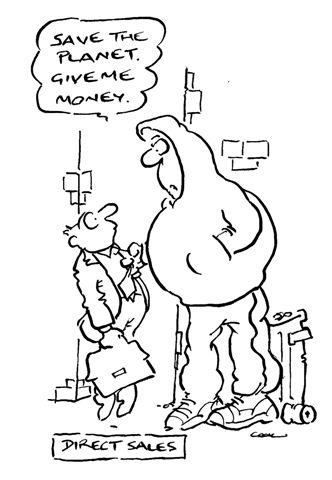How saving the planet can help your business
The profit motive is not flavor of the month. It’s blamed for a lot of things, not least environmental degradation.
Business should be rightly worried about it. Public concern about the environment is growing, not receding. Business can resist the trend, but it is a market reality. What happens if we embrace it?
The word sustainability has been around for a while. It may have been hijacked by the climate change debate, but it dates to the 13th century and derives from the French word sustenir, meaning to endure.
Does anyone not want their business to endure?

There is an alternative. That is to align sustainability with your profit motive. Use the notion to explore product and process innovation that makes your business endure, along with the environment.
Logistics firm, UPS, did this last year by redesigning its delivery routes. Some ideas were simple, like eliminating left hand turns so vehicles no longer idled away waiting for a gap in the traffic or a change of lights. The result? For the planet, a saving of around 20,000 metric tones of CO2 emissions; for UPS, a massive cut in the fuel bill.
This is a real contribution to the sustainability of both. It’s given the firm competitive edge through lower costs in a way that achieves a social outcome.
Management academic, Michael Porter, made this same point in a landmark piece in Harvard Business Review early this year. He called it “shared value”, which, contrary to Corporate Social Responsibilty (CSR) or philanthropy, is “self-interested behavior that creates economic value by creating social value”
So where does your self-interested behavior come in?
Try using sustainability as a focus for profitable innovation.
- Inputs: you don’t have to be UPS. For my equine business, it’s using grey water for irrigation, solar for power and recycled horse manure for fertilizer. All three lower costs and produce a better result for everyone, including the horses.

- Products: United Biscuits cut its material needs by 16% by using recyclable lightweight packaging, reducing its transport charges as well. Making anything lighter usually lightens costs.
- People: wellness programs for employees reduce absenteeism, cut staff turnover and reduce health costs. Porter quotes Johnson and Johnson as saving $2.17 for every $1 spent on wellness programs. In a country known for the high cost of employee health care, that amounted to $250m over 5 years.
- Market: your customers may demand this. Consumers increasingly favor organic food, recycled packaging and products with a low carbon imprint. Prices on those goods are often higher, but so are margins.
- Supply chains: more corporations ask suppliers for their green credentials. If you want to remain a preferred supplier, you may have no choice. The challenge is to meet their demands and improve your profitability at the same time.
Environmental sustainability and the profit motive don’t have to oppose each other. Bringing them into alignment can build enduring qualities for both.


